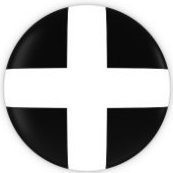January 6, 2021 -- a day that will live in infamy
-
Recently Browsing 0 members
- No registered users viewing this page.
-
Topics
-
-
Popular Contributors
-
-
Latest posts...
-
40
What are you doing tomorrow?
Short Timer, There's no doubt you are clueless about Thailand. Just a sad troll. -
123
How often do you shave?
No, this one is very quick. I love it. And no foam needed. Takes 3 minutes. I just wonder how soon the blades will not be sharp. Then it may start to get tedious. what is the monthly cost of blades? -
26
Marijuana use dramatically increases risk of dying from heart attacks and stroke, large stud
Dry-herb vaping of cannabis flower is "most toxic"? I don't think so. All you inhale/consume is vapor and THC - assuming you've got the temp properly adjusted. The referenced study clearly mentions that methods of consumption were not recorded, and that most participants were smoking cannabis flower. -
11
Politics Thai Opposition Demands House Dissolution Amid Coup Concerns
Just because they are in politics doesn't necessarily mean they're good at politics. -
13
Scam or lack of understanding ?
where the stores do scam people is when they package 2, 3 or 4 items together and stick a price tag on it for the package but when you check the price of the same item individually, it's actually cheaper to buy the individual items rather than the packaged ones. -
8
5 Year Crypto Tax Holiday Announced.
UK only charges tax on overseas income brought back to UK. Keep your money here and it’s tax free.
-
-
Popular in The Pub




.thumb.jpeg.d2d19a66404642fd9ff62d6262fd153e.jpeg)



Recommended Posts
Create an account or sign in to comment
You need to be a member in order to leave a comment
Create an account
Sign up for a new account in our community. It's easy!
Register a new accountSign in
Already have an account? Sign in here.
Sign In Now